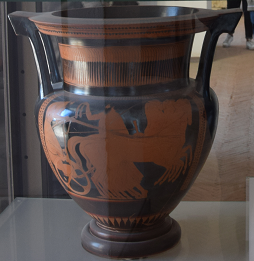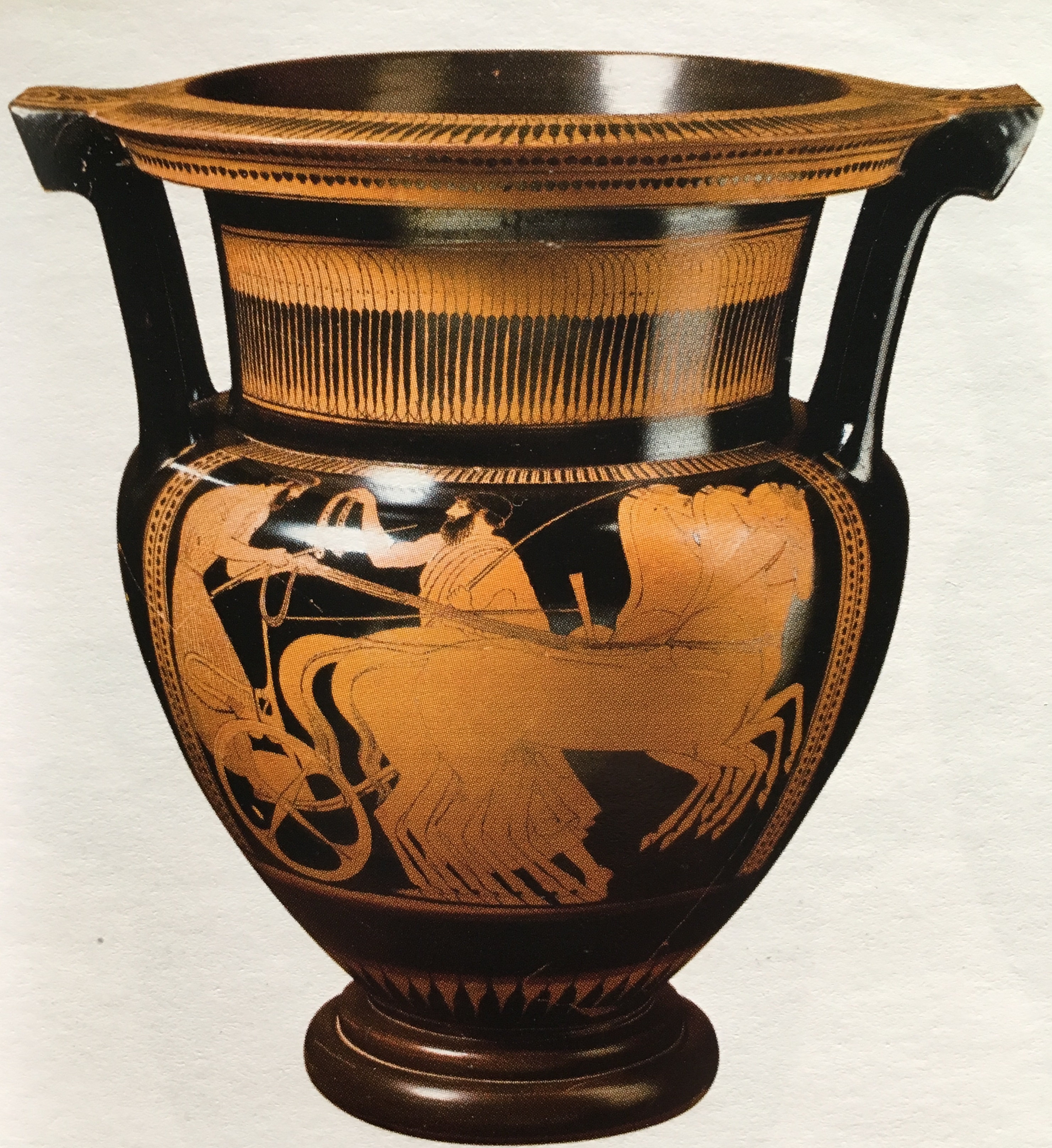
This jar is a “red-figures” colonnade Attic Crater, dated to the first half of the V sec a.D by the painter of Boreas, an active ceramograph in this technique around the middle of V sec a.D and who painted large pots of the most ambitious varieties, such as voluminous and columnar craters, in a large and solemn language, known as one of the most representative members of that style. It was found in a tomb partially destroyed in Cumae and in other subsequent burials in the same place. The jar has a top flat concave head edge, cylindrical neck distinct from the shoulder, ovoid body a disc shaped foot with step and ring base a pillow top with top plate decorated with inverted palm trees suspended in ribbons and volutes. An ivy skirt decorates the thickness of the rim, while lotus flowers hang on the arches and appear between the loops and on the upper edge of the rim. The field is framed by tabs on the top and leaflets laterally. In the figurative scene of the main face the horseshoes of a quadriga are held by a bearded Auriga, to which a character bearded with chitone and himation in his left hand, placed beyond the quadriga, handsover bandage. The theme represented must be attributed to celebrate the lorry and the victory of the aristocracy (represented by the presence of the Auriga) not only in the military, but also in the field of sport, as in a race of quadriges. The same vase, the crater, used to mix high-grade wine with water, is based on the aristocratic (male) idea of the symposium.

